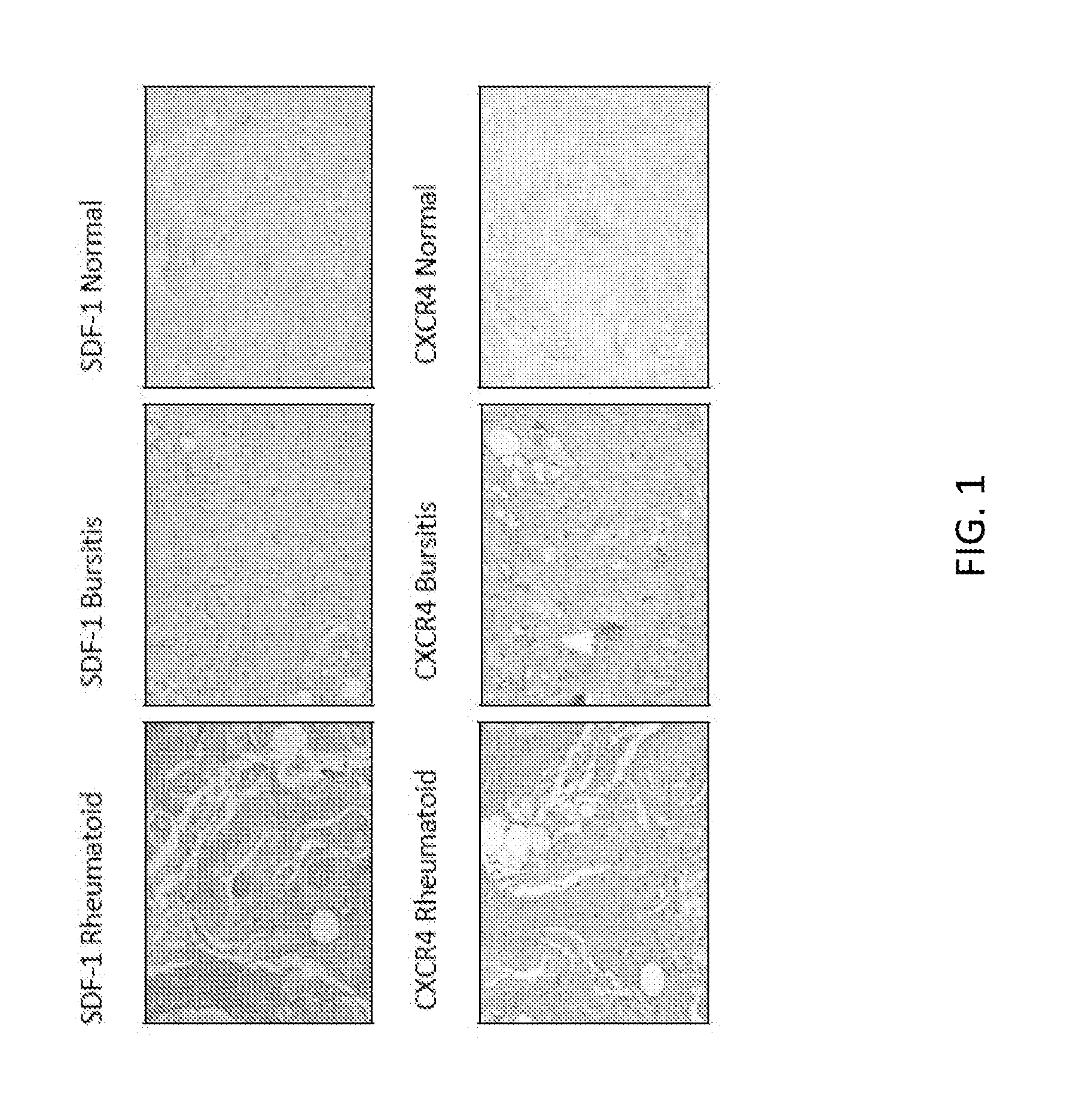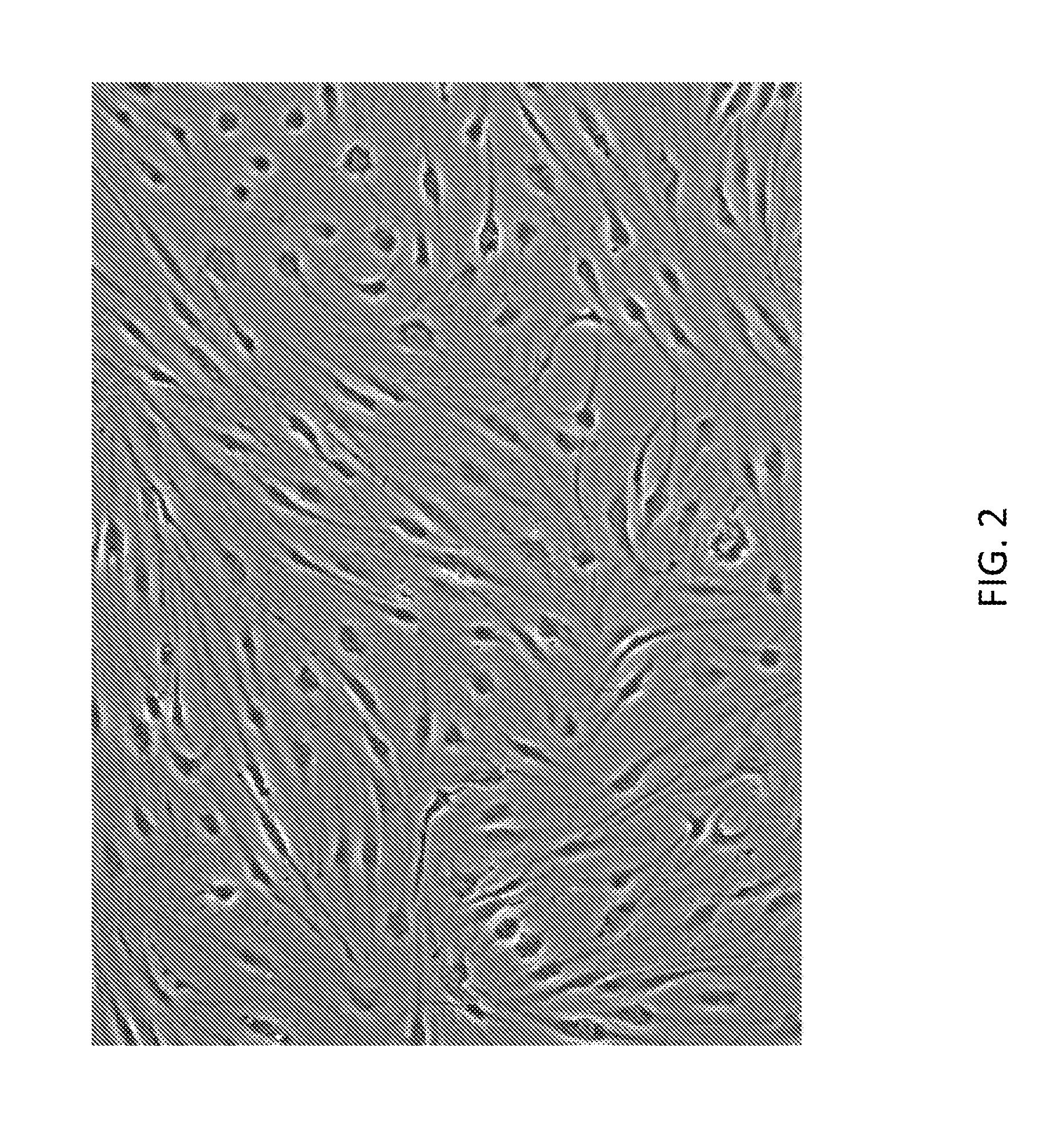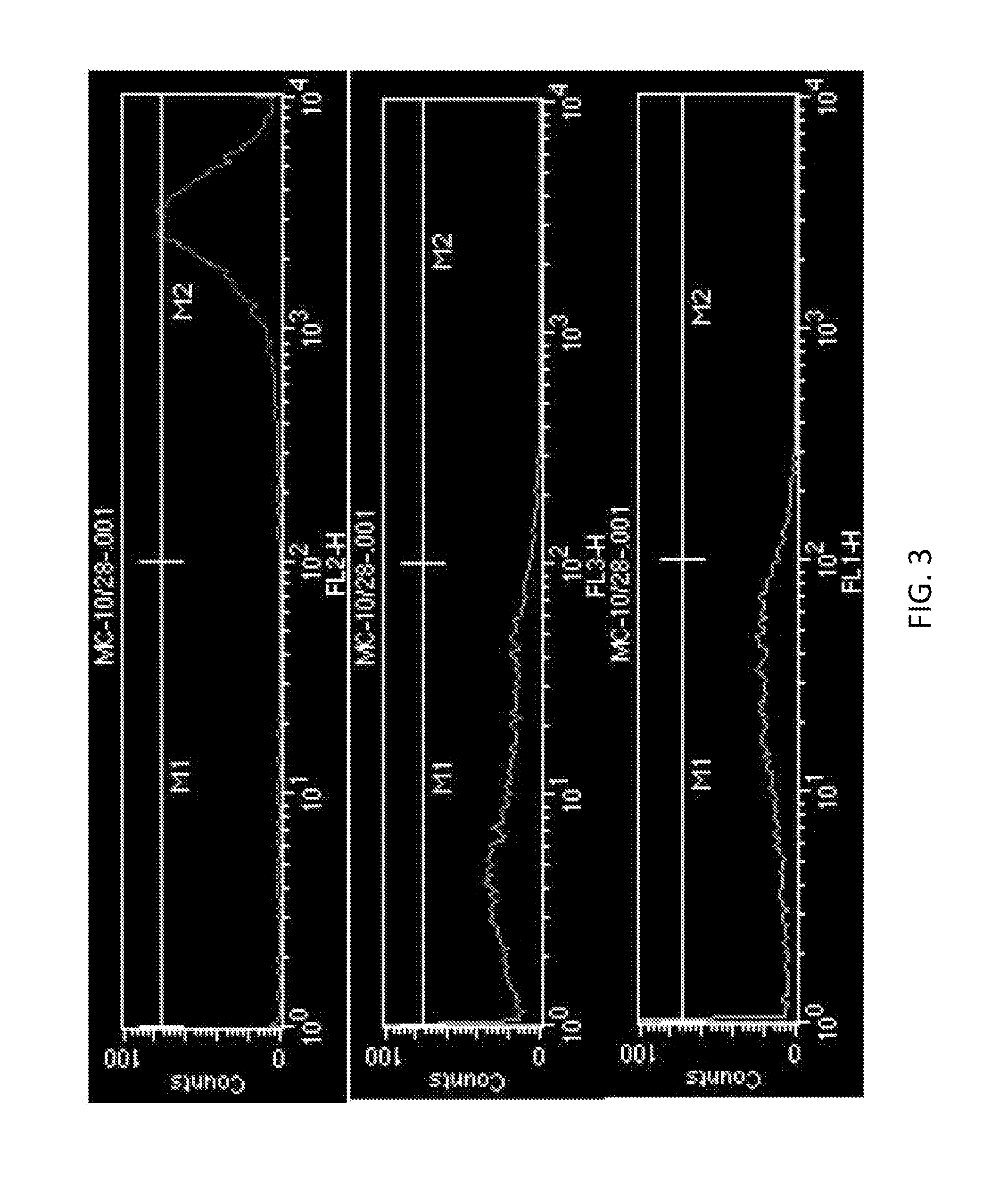Stromal Derived Factor Inhibition And CXCR4 Blockade
- Summary
- Abstract
- Description
- Claims
- Application Information
AI Technical Summary
Benefits of technology
Problems solved by technology
Method used
Image
Examples
example 1
Methods and Materials
Immunohistochemistry (IHC) of Bursal Specimens
[0102]Human subacromial bursal biopsy specimens were obtained under written informed consent. Fresh subacromial bursal tissues were obtained from patients undergoing shoulder surgery. Tissue sections were then fixed in 10% formalin, decalcified, and embedded in paraffin. Sections were stained for Hematoxylin / Eosin (HE). The remainder were labeled with primary monoclonal antibodies against IL-1β, IL-6, SDF-1α and CXCR4. Several control slides from each set were made using only phosphate buffered solution (PBS).
Cell Cultures and Characterization
[0103]Human subacromial bursal biopsy specimens were obtained as above. Tissues were washed with Hank's balanced salt solution (Gibco), minced with scissors, and resuspended in Dulbecco's minimum essential medium (DMEM, Gibco) containing 1 mg / ml collagenase, 0.15 mg / ml DNase, and 0.15 mg / ml hyaluronidase. The tissue was enzymatically digested for 2 hours at 37° C. and then passe...
example 2
CXCR4 Blockade Inhibits SDF-1 Expression and Cell Migration in Human Subacromial Bursa Cells
[0107]Described herein are cellular and biochemical events that occur in the process of subacromial inflammation and rotator cuff syndrome. Inflammatory mediators have been implicated in causing cytokine-induced tendonitis, and subacromial bursitis is characterized by chronic inflammation in the subacromial bursa. In addition to the up-regulation of several cytokines (TNFa, IL-1β, IL-6) and cyclooxygenases (COX-1, COX-2), SDF-1α, a potent pro-inflammatory chemokine, was found to mediate the bursal cell's response to mechanical or biochemical signals.
[0108]Chemokines are a soluble peptide family that regulate cell movement, proliferation, and differentiation, exerting their effects through a family of transmembrane G-protein coupled receptors. SDF-1α is an 8 KDa peptide originally isolated from a bone marrow stromal cell line. It activates a variety of primary cells through binding to its rece...
example 3
SDF-1α Plays a Central Role in the Pathophysiology of Subacromial Impingement
Interleukin-1β Stimulates Stromal Derived Factor-1α Expression In Human Subacromial Bursa
[0126]Chemokines produced by synoviocytes of the subacromial bursa are up-regulated in subacromial bursitis and rotator cuff disease. Studies were carried out to determine whether SDF-1α production in bursal synoviocytes is induced by local cytokines such as interleukin IL-1β and IL-6.
[0127]Subacromial bursa specimens were obtained from patients undergoing shoulder surgery. Bursal specimens were stained with anti-human antibodies to IL-1, IL-6 and SDF-1α by immunohistochemistry and compared to normal and rheumatoid controls. Bursal cells were also isolated from specimens and cultured. Early-passaged cells were then treated with cytokines (IL-β and IL-6) and SDF-1α expression was measured by ELISA and RT-PCR.
[0128]SDF-1α, IL-1β and IL-6 were found to be expressed at high levels in bursitis specimens from human subacromia...
PUM
| Property | Measurement | Unit |
|---|---|---|
| Pharmaceutically acceptable | aaaaa | aaaaa |
Abstract
Description
Claims
Application Information
 Login to View More
Login to View More - Generate Ideas
- Intellectual Property
- Life Sciences
- Materials
- Tech Scout
- Unparalleled Data Quality
- Higher Quality Content
- 60% Fewer Hallucinations
Browse by: Latest US Patents, China's latest patents, Technical Efficacy Thesaurus, Application Domain, Technology Topic, Popular Technical Reports.
© 2025 PatSnap. All rights reserved.Legal|Privacy policy|Modern Slavery Act Transparency Statement|Sitemap|About US| Contact US: help@patsnap.com



